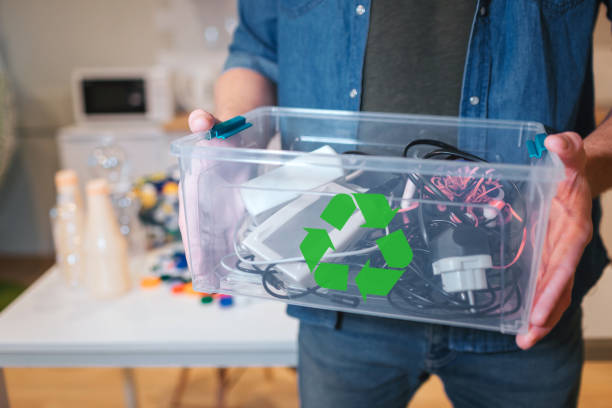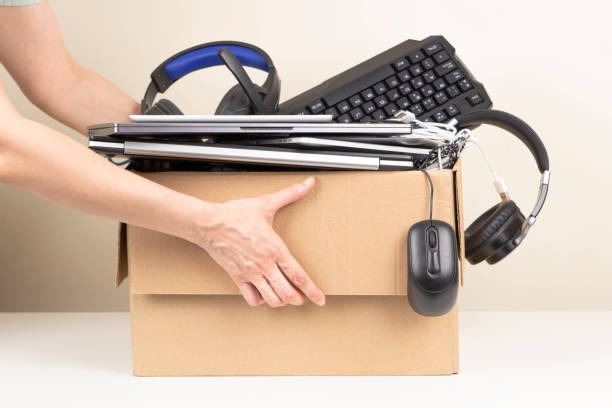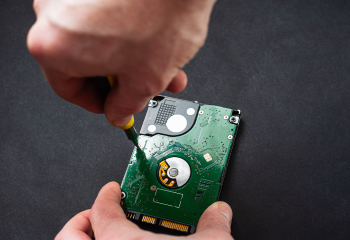WASTE AND WHAT ELECTRONICS CAN BE CONSIDERED AS E-WASTE
A lot of electronic equipment have become less valuable to users and are no longer offering maximum satisfaction to them. Oftentimes, this occurs due to a breakdown of the equipment or an upgrade and innovation in technology.
The behaviour of an average individual has ‘transformed’ due to a rise in technology, the demand to stay in vogue with the latest smartphone or other equipment has led to an increase of E-waste.
So, what exactly do you need to know about E-waste? You may ask, what equipment can you consider as E-waste?
In this article, we will give adequate responses to these questions. Let’s go deeper!
What Exactly is E-Waste?
E-waste is referred to as Electronic Waste. We could as well refer to it as electronic scraps or trash.
Electronic waste is any electrical equipment that is unwanted, obsolete and considered as ‘not working’.
E-waste is completely important because electronics have a short useful life. As such, they become electronic waste at a fast pace. In the U.S. alone, the Environmental Protection Agency estimates that up to 60 million metric tons of e-waste end up in landfills every year.
We cannot completely discuss Electronic waste without talking about E-waste recycling. As we consider E-waste, we should also know the concept behind managing your old or broken equipment.
E-waste recycling is the reuse and reprocessing of electrical and electronic equipment of any type that has been discarded or regarded as obsolete.
This process can help recover useful materials from those wastes that will in turn be used to produce other items. Sounds good, yeah.
Due to the millions of electronic equipment in use everyday and with their short life span, we can say that recycling of E-waste is a trend everyone should get familiar with.
Recycling of E-waste was initiated to protect human and environmental health mainly due to the widespread environmental pollution impacts of E-waste
It is also good you know that these electronics often contain toxic chemicals and hazardous materials. And where you do not dispose of them properly, it can cause the release of toxic substances into our environment.
So we say, Yes to recycling of E-wastes.
Common Items that can be considered as E-Waste
Having considered what E-waste is about and moving further to understanding the concept of E-waste recycling, it is important that you know the electrical and electronic items which you can consider as E-waste that can be recycled. Right? Let’s take a look at them.
Computers: Different parts of your laptop can be recycled. They include the glass monitor, keyboard, plastic or aluminum casing, cables, CD-ROM drive, ray tube, power cord, circuit board, batteries and printer cartridges.
Mobile Phones: Recycling your mobile phone, aids in the production of other useful items. It also saves energy as well as securing the environment from toxic impact which can be generated from the plastics and iron materials on the mobile phones.
Electric Cookers/Heaters/air conditioners/Fans/Microwave/Radios/Televisions: If you’re looking for a way to earn some money, then this is a good way. You can sell these appliances for scrap metals. If the appliance is in working condition, you can as well sell it online. There are always people who’d rather pay a fraction of the price for working items than buy a new one.
Apart from the listed objects, there is an endless list of other objects which can be recycled.
Conclusion
Recycling of e-waste is a growing trend due to its potential to reduce environmental hazards and pollution.
Instead of disposing of your electrical equipment and appliances in trash cans, it is healthier to recycle these items so as to keep our environment in a safe condition and save as much energy as possible. Do you agree with this?
Stay connected with us, as we will be discussing how you can begin recycling your e-wastes from the comfort of your homes on our next blog post.
Begin recycling of your E-wastes today!
 2024-03-28
2024-03-28

